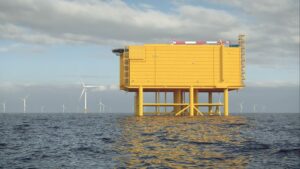The Malaysian contractor confirmed the award from Petrofac on 29 November and said the OSS HVDC platform consists of a topside and jacket for the IJmuiden Ver Alpha project.
The subcontract scope consists of construction engineering, fabrication, mechanical completion, load out and sea fastening, and architectual works on engineering, procurement, and construction (EPC) basis.
The offshore substation platform will comprise a topside, weighing approximately 30,000 tonnes (including equipment) , and a jacket, weighing about 10,000 tonnes, said MHB.
In addition, the parties will also collaborate towards the possibility of fabrication works for two additional offshore substation units of similar size.
“Gearing up for fabrication works, MHB will be expanding further the reactivation of MMHE East yard which will be utilised alongside MMHE West yard in delivering this project,” said Pandai Othman, Managing Director and Chief Executive Officer of MHB.
Prior to the subcontract, MMHE and Petrofac had entered into an early works agreement back in July 2023, in which MMHE has begun the preparatory works and deployment of key personnel for design and constructability support in line with Petrofac’s targeted delivery of the offshore substation for TenneT’s 2 GW programme in the Netherlands.
“We are truly honoured to support TenneT’s 2GW Programme with our client, Petrofac, whom we would like to express our gratitude for entrusting us with this monumental project,” said Othman.
“This represents a significant achievement for MHB on two fronts that we have been diligently pursuing – venturing into the renewable energy sector and establishing our presence internationally.”
In the first quarter of 2024, the Netherlands will grant two offshore wind development permits, one for the IJmuiden Ver Alpha site and one for the IJmuiden Ver Alpha Beta site, each of which can house approximately 2 GW of installed offshore wind capacity.
Germany, the Netherlands, Denmark, and Belgium have agreed to install at least 65 GW of offshore wind energy together by 2030. At 40 GW, almost two-thirds of this is accounted for by TenneT, with 20 GW each in the German and Dutch North Seas.
On top of this, Energy Ministers from the members of the North Seas Energy Cooperation (NSEC) and the European Commission have recently announced a significant increase in their collective ambition in the deployment of offshore renewable energy until 2050.
